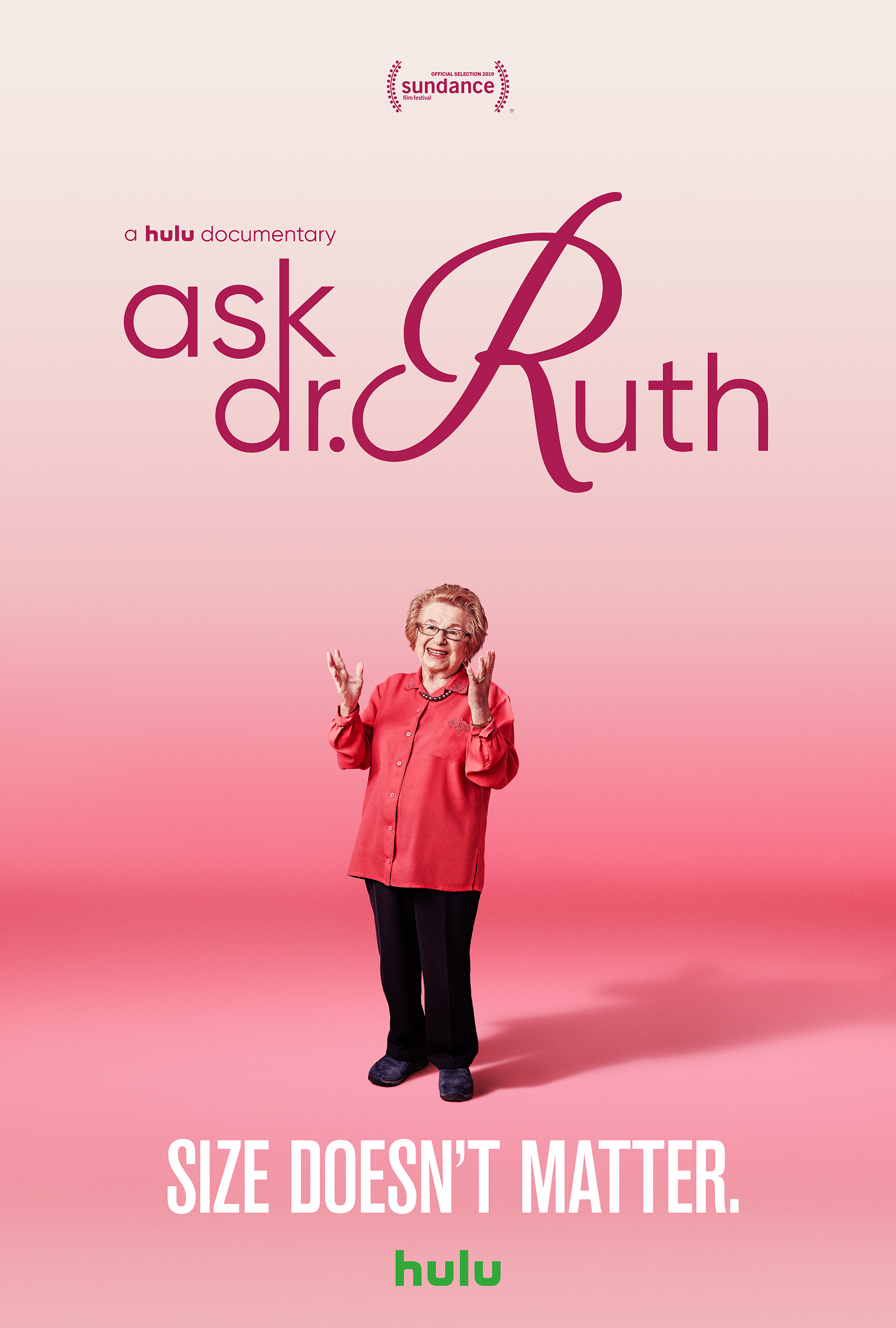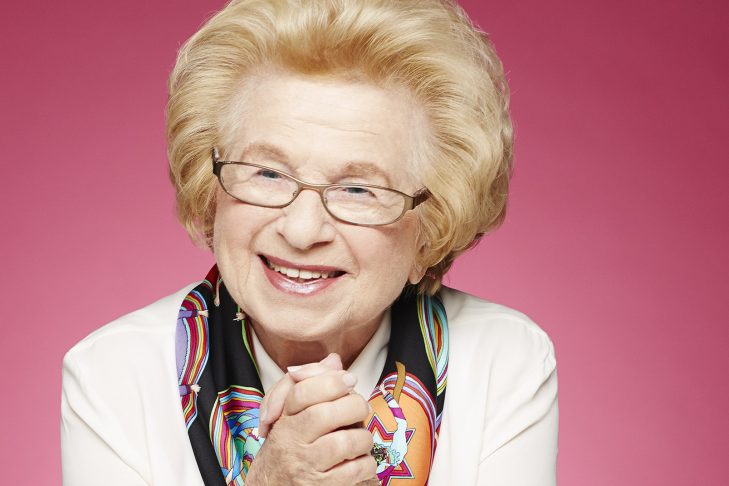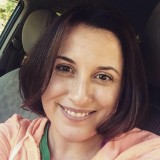When I was assigned to screen “Ask Dr. Ruth,” I wasn’t extremely excited. Not that I don’t like Dr. Ruth—I definitely enjoyed interviewing her in 2016, and really, who doesn’t like Dr. Ruth?—but what else was there to know? In my mind, Ruth Westheimer was a peppy 1980s-era munchkin who doled out romance advice in a thick accent (which The Wall Street Journal once described as a “cross between Henry Kissinger and Minnie Mouse”). But a documentary? Really? About an elderly sex therapist? I thought of her as Sophia from “The Golden Girls” with a naughtier vocabulary.
How wrong I was. This film is wonderfully emotional—yes, I cried—and it made me realize that Dr. Ruth is so much more than a punch line. The child of Holocaust victims, Karola Ruth Siegel was orphaned at 10, but not before watching Nazis kidnap her father. She still remembers looking out the window and watching him wave, with a sad smile, as he was packed away. She was shipped off to the safety of a Swiss orphanage, where she waited for word to arrive from her parents. It never did. What followed was a whirlwind life in which she compensated for that abandonment by living fiercely and keeping ferociously busy. To this day, she hates to be alone, says her son, Joel.
Critics of the documentary say that filmmaker Ryan White holds her at a bit of a distance. We learn about her childhood and her husbands (there were three!) and her meteoric rise to fame, first as a radio host and then as a TV personality and sought-after copulation guru. But for all her openness about sex and sexuality, there’s a distance and a sadness that goes unexamined. Her daughter, Miriam Westheimer, reveals that she only saw her mother cry once, at her father’s death. And she was back to work two days later.

But while some see it as a failing, to me it seems like a component of her steeliness, accurately captured. There are no false emotions here—no faking it, shall we say. Here’s what to look for:
- A hilarious opening scene that sets the tone for the rest of the film. You will watch Westheimer shriek at Alexa, “Alexa, am I going to get a boyfriend? If she doesn’t know that, what good is she?” Westheimer, it seems, is really part tech-befuddled grandma, part Borscht Belt comic.
- A look at the real-life effects of the Holocaust. This is one topic about which Westheimer isn’t candid. The film does an admirable job examining Westheimer’s early childhood in Frankfort and ensuing years in a Swiss orphanage, where she conducted her first teenage romances (we even meet an early paramour, who joins her in a creaky harmonizing of “You Are My Sunshine”). The flashback characters are rendered as doe-eyed animations, which is a bit jarring, but you’ll get over it. She didn’t openly offer information with her family, says her daughter, but we later see her visit Yad Vashem, the World Holocaust Remembrance Center in Israel. “As difficult as it is for me, I have an obligation to learn about the fate of my family,” she says. “I don’t call myself a survivor. I call myself an orphan.”
- Much like a similar film about a powerhouse Jewish senior citizen, RGB, we get to meet her (seemingly incredibly well-adjusted) family, including her grandchildren, who help to shed light on the character as a human instead of an icon. Watch as her granddaughter tries to get her to admit that she’s a feminist, even though the notoriously , 126268apolitical Ruth shies from such a label despite her liberal stances on abortion, AIDS research and gay rights. “What you resist is the activist bra-burning,” offers her daughter, Miriam. Westheimer shrugs.
- There’s lots of 1980s flashback TV and radio. If you long for the days of Joan Rivers and Arsenio Hall, you’ll enjoy this.
- She’s lived in the same Washington Heights apartment for decades—her kids grew up there—and it looks just like your grandma’s. It’s down the end of a long hallway, cluttered and lived-in. Westheimer gleefully tells the camera that she’ll never reveal how much money she has, and her living quarters (and wardrobe) give nothing away.
- Snippets of Westheimer the person. The film shines when we see her in unvarnished moments, such as playing chess with her grandchildren or insisting, at her 90th birthday party, that her assistant get plenty of food. “Did you eat? Did you eat?” she frets, tottering toward the exit with a bouquet of flowers.
Related
“Don’t tell me I can’t go up to first class!” she said. “I wasn’t about to miss that view.”
She gave her ex-husband the car, she said, and she “kept the child.” But we learn little about how she made ends meet as a housekeeper making $1 per year, teaching herself English by reading romance novels and going back to school. Her third and final husband—and her true love—was engineer Fred Westheimer, whom she met on a ski trip (after stealing him from a pal). He was a steadying and supportive presence, but we don’t find out much about their own marital dynamic and his role in her success, despite her willingness to discuss everything from vibrators to frigidity with strangers. Like Ruth Bader Ginsberg’s husband, Martin, he was comfortable letting her have the limelight.
Just the same, the film is a lovable portrait of a buoyant, resilient woman who, at 90, can still dance all night—“if I have the right partner,” she says with a cheeky wink.
Watch “Ask Dr. Ruth” on Hulu.






